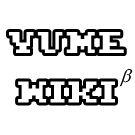This page explains how to track of the location maps hosted on the wiki, assessing their quality, and tracking ongoing issues with them.
All maps require a letter grade. New maps should be assigned letter grades.
Letter grade
Letter grades serve as a broad indicator of how usable and compliant with the Style Guide a given map is. Maps with worse letter grades should generally be prioritized for adjustment over maps with better ones. The worse the letter grade, the more adjustments needed to bring a map to compliance.
Despite their superficial similarity to educational grades, these grades do not correspond directly to letters grades used in schooling. They should not be used like letters in a "tier list". Maps should be assessed according to the criteria below, independently of each other. For very complicated maps or maps you're not sure of how to assess, consider going to that location in-game and then trying to use the map to navigate it, and assess how difficult it is to use.
Do not use +/- for letter grades. Give a single letter grade to every map. In other words, don't grade maps using notation like "B-" or "B/C". If you're torn between two letters, give the worse grade.
When prioritizing maps to adjust, triage in this order: F > D > C > B > Z > A.
Definitions
A: Exemplary. Needs very few, if any, adjustments to be compliant with the Style Guide. The map is readable, accurate, and includes all necessary information to navigate the area it depicts.


B: Good. The map is readable and reasonably accurate. It only has minor style issues. It may require some small adjustments to be in line with the Style Guide, or might be missing minor navigation information.


C: Noncompliant. The map is usable by most users, but has noticeable deviations from the Style Guide. Some of its design elements may cause accessibility issues. It requires moderate adjustment to be in line with the Style Guide. It might be missing navigation information.


D: Needs improvement. The map has obvious style problems that require major adjustment to be fixed, but it is better than not having it at all. The map might be visually confusing or hard to use. It likely has accessibility issues. It might be missing important navigation information, or have minor misinformation. It might be slightly outdated.

F: Needs to be redone. The map falls afoul of many map guidelines that severely hamper its usability. It might actively make navigation more difficult. It might have major misinformation. It might have no navigation information whatsoever. It might be severely outdated.


Z: Needs to be redone, but doing so will be highly difficult and time-consuming. Has similar issues as grade F, but on a widespread scale. The map is effectively almost useless. This letter grade should be reserved for highly complicated maps or maps with hard-to-explain gimmicks that would require major adjustment to a map's look to communicate. Maps like this might need a specialized solution to be made usable.


Notes
Include any observations about the map you find. This can include explaining your reasoning for why you've given a map a particular letter grade, or listing specific issues or Style Guide violations you've discovered. You may also briefly list adjustments that can be made to the map to make it more usable or compliant with our guidelines.
